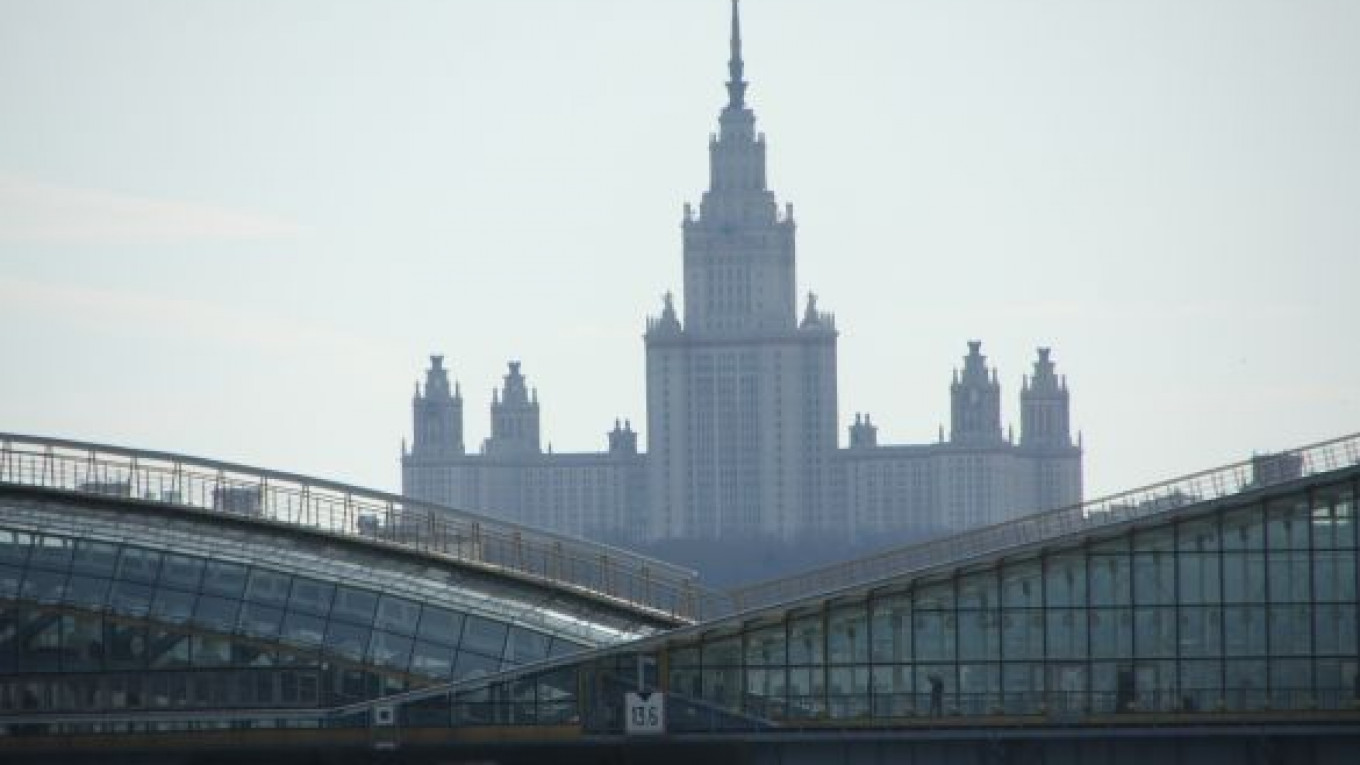Muscovites piled back into schools and universities Sept. 1 — or as it was traditionally known in the Soviet Union: "Den Znany" or "Day of Knowledge." While it is of special significance for young children starting school for the first time, it is also the day that the semester begins at Moscow State University (MGU) and when newcomers might exchange the many myths that they have heard about the main campus building.
One of the most notorious fables about the university building, one of the Stalin's "Seven Sisters" constructed in the middle of the 20th century, is the foundation upon which it stands. Word has it that the unstable soil around Vorobyovy Gory was dug out and liquid nitrogen poured into the gaping hole, with giant freezers being installed.
The area is labeled the "third basement," and is considered to have been of utmost secrecy by subscribers to the legend: if the freezers are disabled it is said the entire building would drift into the Moscow River within the space of a week.
The location originally proposed by Boris Iofan, famous for having drafted the design for the nonexistent Palace of the Soviets, caused some all-too-real concern about the possibility that the building could slide into the river from the top of Vorobyovy Gory. In 1948, specialists convinced Stalin that the structure needed to be moved 800 meters inland.
However, the building itself is thought to be able to survive should such circumstances occur : another similarly strange legend decrees that MGU is almost indestructible. A "special" mix of cement was used for the educational center's building blocks, and it could survive any explosion according to the alleged physics calculations, which may or may not have ever actually happened.
What lies beneath the building is part of another broader Moscow legend and may have actually had some basis in fact. The notorious "Metro 2", which is said to run underneath the "regular" metro, is thought by some to have one of its stops positioned under the building and a secret "underground city" alongside it.
The U.S. Department of Defense is known to be in possession of a map that marks out the routing of Metro 2, and there are suggestions that a bunker, rather than a city, exits under the university, perhaps 200 to 300 meters underground. The building's connection to Metro 2 is said to link it with a number of strategically important places in the city, including the Kremlin and FSB headquarters, again, according to rumor. Others say that the building conceals a network of enormous secret laboratories.
Not all of the myths surrounding MGU surround its foundations. On the higher floors of the building, a camp of sorts was located, as prisoners from the gulag were enlisted to work on its construction in 1952, a year before its completion. One rumor has it that an escape attempt was executed after a prisoner constructed a hang glider out of scrap building materials.
While some think the prisoner successfully soared to the other side of the river and escaped to his freedom, others say he made it to the ground much closer to the university, breaking his leg in the process. Despite being caught, Stalin was thought to have personally freed him on account of his bravery.
However, a guard who was said to have fired a bullet from a similar altitude may not have been so lucky. A stray bullet was found near Stalin's dacha in Kuntsevo as the university was being completed, which was found to have been fired from the university in what people said was an assassination attempt. However, it was supposedly an accident, which happened during a changing of the guard.
Urban legend says that a gold statue of Stalin himself is meant to adorn the building's peak. However, after the leader's death, there was a rushed meeting and the model was bricked up in a secret location within the depths of the university cellars.
This old fable may have roots in the fact that a statue of Soviet scientist Mikhail Lomonosov, who was also the university's founder, was first intended to stand on the rooftop.
A final, more recent legend tells of a graduate student who resided on the ninth-floor of the building in the 1980s. He had been drinking vodka in the company of friends, and fell out of the window while having a cigarette. His concerned friends spent 10 minutes trying to make out where he fell in the thick of the night, before he re-entered the room and poured himself another glass of vodka, seemingly unscathed.
In the morning he remembered nothing, aside from experiencing discomfort from a dislocated leg. Apparently, the student fell into an enormous snowdrift, characteristic of Russian winter, saving his life.
A Message from The Moscow Times:
Dear readers,
We are facing unprecedented challenges. Russia's Prosecutor General's Office has designated The Moscow Times as an "undesirable" organization, criminalizing our work and putting our staff at risk of prosecution. This follows our earlier unjust labeling as a "foreign agent."
These actions are direct attempts to silence independent journalism in Russia. The authorities claim our work "discredits the decisions of the Russian leadership." We see things differently: we strive to provide accurate, unbiased reporting on Russia.
We, the journalists of The Moscow Times, refuse to be silenced. But to continue our work, we need your help.
Your support, no matter how small, makes a world of difference. If you can, please support us monthly starting from just $2. It's quick to set up, and every contribution makes a significant impact.
By supporting The Moscow Times, you're defending open, independent journalism in the face of repression. Thank you for standing with us.
Remind me later.






